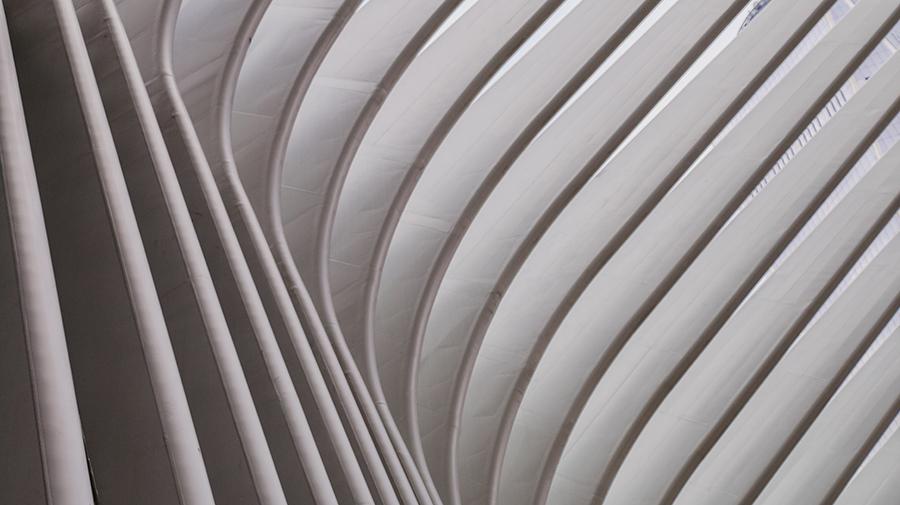
Human Centric Lighting is big business for designers, architects and scientists.
But are we reaching beyond the facts?
What is Human Centric Lighting?
Human Centric Lighting, sometimes called Circadian Lighting, is still a relatively new concept and can be tricky to pin down. At its most basic level, HCL is all about lighting that mimics the sun.
Sunrise and sunset are powerful biological triggers, releasing the hormones that wake us up in the morning and send us to sleep at night. Sleep scientists have now proven that light is the main factor regulating our circadian rhythm.
But the advent of artificial lighting has wreaked havoc with our internal clock.
In the developed world, where according to LYS data we spend an average of 94% of our lives indoors, artificial lighting is having a powerful effect on our sleep patterns and overall wellbeing. Bad lighting causes weight gain, depression, and increased risk of cardiovascular disease.
Human Centric Lighting solves this problem.
By simulating the natural cycle of daylight — sunrise and sunset — HCL attempts to create a healthier environment that’s more in sync with your internal clock. It promises to improve your sleep, productivity and health.
Market growth
As the scientific evidence grows, Human Centric Lighting is becoming a huge market opportunity.
The overall market is projected to grow from $810 million in 2019 to USD $3,655 million by 2024. And at The Global Market Summit earlier this month, circadian rhythms were predicted to be the number 1 trend in wellness in 2020.
“It’s like green building 10 years ago — it’s going to become the default,” said Natalia Lesniak, a senior lighting designer at Lumen Architecture.
If the estimates that sleep disruption causes billions of dollars of damage to the world economy every year are even close to being true, then HCL will undoubtedly become big business.
The problem
This all sounds like brilliant news for the lighting world as an exciting new frontier opens up.
However, there are warning signs that we might be getting ahead of ourselves in a gold rush to quickly profit from a new era of sleep science that is still in its infancy.
Professor Russell Foster — the founding father of circadian rhythm science — has warned that some people within the lighting industry are simplifying the science and jumping to conclusions.
Speaking in an interview with LUX magazine, Professor Foster said that “it’s more complicated than ‘blue light is good’ and ‘red light is bad’. The answer is a dynamic lighting system. We need more a little more reflection before rushing in wholesale”.
One of the big problems with circadian lighting is that most people do not spend their days in confined environments. We experience different light conditions as we travel, move between rooms and gaze at screens.
Mariana G. Figueiro is the Director of the Lighting Research Center. Speaking about the effectiveness of some HCL solutions, she said: “The important thing about circadian lighting is that it’s really a 24-hour light-dark pattern […] If I don’t know what else you’re being exposed to over the rest of the day, I can’t guarantee it’s going to be beneficial.”
Everyone’s circadian rhythm is slightly different. Sleep scientists call this your chronotype. (Put simply, your chronotype is whether you are a morning or an evening person.)
Most HCL solutions, however, do not take your chronotype into account. Ironically, many HCL solutions are not centred on the human at all. They are blanket, one-size-fits-all products for a complex and personal problem.
The solution
As we embark on a new decade and as the market continues to grow, the Human Centric Lighting of the future has to be based on hard facts. It must also be based on a detailed understanding of the people we are trying to help.
At LYS Technologies, we hold the largest and most comprehensive database about circadian rhythms in the world. We have analysed close to 1 billion distinct data-points, across 53 countries, over thousands of days of light intake. And with the power of machine learning and advanced data analytics, we’re able to interpret all this raw data into insightful stories and powerful insights.
We hold the largest and most comprehensive database about circadian rhythms in the world.
Our research puts the individual at the centre of the process. Using wearable light sensors, the LYS Button, we measure and analyse people’s actual exposure to light throughout their day – we don’t just measure a snapshot of the lighting conditions in one particular space. We are also able to take into account people’s personal chronotype, their own idiosyncratic sleep-wake cycles.
Our services ensure that lighting designers, architects, and construction firms are making decisions based on facts. Because data has to be the future of Human Centric Lighting.